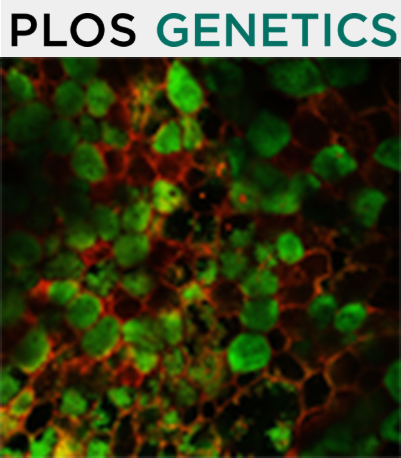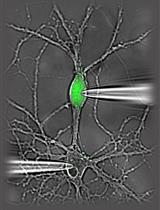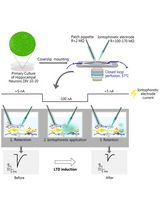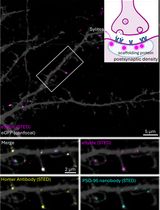- EN - English
- CN - 中文
Ethanol-induced Sedative Behavior: An Assay to Investigate Increased Dopamine Signaling in Caenorhabditis elegans
乙醇诱导的镇静行为:一项在秀丽隐杆线虫研究增加多巴胺信号
发布: 2021年07月05日第11卷第13期 DOI: 10.21769/BioProtoc.4083 浏览次数: 3229
评审: Oneil Girish BhalalaShaarika SarasijaAnonymous reviewer(s)
Abstract
Dopamine (DA) signaling affects locomotion, feeding, learning, and memory in C. elegans. Various assays have been developed to study the proteins involved in these behaviors; however, these assays show behavioral output only when there is a drastic change in DA levels. We designed an assay capable of observing behavioral output even with only slight alterations in DA levels. To achieve this, we designed a behavioral paradigm where we combined C. elegans movement with ethanol (EtOH) administration. The behavioral response to alcohol/EtOH and susceptibility to alcohol-use disorders (AUDs) have been linked to DA. Our assay correlates an increase in DA levels due to EtOH and movement obstruction due to a dry surface to a circular sedative behavior, which we designated as EtOH-induced sedative (EIS) behavior. We successfully utilized this assay to assign physiological and behavioral functions to a DA autoreceptor, DOP-2.
Keywords: EtOH (Ethanol) (乙醇)Background
Alcohol is a widely abused drug with a plethora of associated diseases that can impact societal functioning. Multiple studies have focused on unravelling the mode of action and effect of this drug; however, the neuronal mechanisms underlying alcohol susceptibility and disinhibition are unclear. Studies across various species have demonstrated that alcohol intake increases the release of the neurotransmitter DA that induces the reward pathway (Imperato and Di Chiara, 1986; Weiss et al., 1996; Baik, 2013). Although C. elegans does not mimic all the complexities of the mammalian system, it has been successfully modeled for studying alcohol-dependent neuronal behaviors. Studies show that C. elegans display diverse aspects of alcohol responses (Davies et al., 2003 and 2004). Previously, investigations in C. elegans have revealed that there is a dose-dependent decline in the locomotor activity upon acute and chronic alcohol exposure at a concentration of 400-500 mM (Davies et al., 2003; Lee et al., 2009). The DA system in C. elegans is involved in feeding, movement, learning, and memory; and similar to that of mammals, signals through two receptor subfamilies D1-like and D2-like receptors. Mutants of the D2-like receptor, dop-2, exhibited no obvious phenotype when analyzed for DA-dependent behaviors, despite being expressed in all dopaminergic neurons and predicted to be an autoreceptor (Chase et al., 2004). We devised an assay utilizing the EIS behavior observed in mutants of dop-2 to investigate the neuronal circuitry involved in regulating locomotory behavior under the influence of EtOH (Pandey et al., 2021).
Materials and Reagents
60-mm Petri dishes (Tarsons, catalog number: 460061)
Spreader (Tarsons, catalog number: 920081)
99.99% platinum wire (Sigma-Aldrich, catalog number: 267201)
C. elegans: N2 (wild-type (WT) and dop-2 (vs105) adult animals with 3-4 eggs (University of Minnesota, Caenorhabditis Genetic Center)
Escherichia coli OP50 (University of Minnesota, Caenorhabditis Genetic Center)
Ethanol (EtOH) (Fisher chemical, catalog number: UN1170)
Cholesterol (SRL Sisco Research Laboratories, catalog number: 54181)
Calcium chloride dihydrate (CaCl2·2H2O) (Sigma-Aldrich, catalog number: C3306)
Magnesium sulfate (MgSO4) (Sigma-Aldrich, catalog number: M7506)
Potassium phosphate, monobasic (KH2PO4) (Sigma-Aldrich, catalog number: P5379)
Potassium phosphate, dibasic (K2HPO4) (Sigma-Aldrich, catalog number: P8281)
Sodium chloride (NaCl) (Sigma-Aldrich, catalog number: S7653)
Bacto-agar (HiMedia Laboratories, catalog number: GRM026)
Bacto-peptone (BD, catalog number: 211677)
400 mM EtOH (see Recipes)
5 mg/ml cholesterol (see Recipes)
1 M CaCl2 stock solution (see Recipes)
1 M MgSO4 stock solution (see Recipes)
1 M KPO4, pH 6.0 stock solution (see Recipes)
Nematode growth medium (NGM) agar plates (see Recipes)
Equipment
Pipettes (Eppendorf, model: Research® plus, catalog number: 2231000224)
2-L glass conical flask (DWK Life Sciences, DURAN, catalog number: 2121763)
Autoclave (Equitron-7431 SLEFA)
Microscope (ZEISS, model: Stemi 2000 C)
Software
GraphPad Prism v6 (GraphPad Software)
ImageJ (developed by the National Institutes of Health)
Procedure
文章信息
版权信息
© 2021 The Authors; exclusive licensee Bio-protocol LLC.
如何引用
Singh, A., Babu, K. and Pandey, P. (2021). Ethanol-induced Sedative Behavior: An Assay to Investigate Increased Dopamine Signaling in Caenorhabditis elegans. Bio-protocol 11(13): e4083. DOI: 10.21769/BioProtoc.4083.
分类
细胞生物学 > 细胞信号传导 > 突触传递
神经科学 > 行为神经科学
您对这篇实验方法有问题吗?
在此处发布您的问题,我们将邀请本文作者来回答。同时,我们会将您的问题发布到Bio-protocol Exchange,以便寻求社区成员的帮助。
提问指南
+ 问题描述
写下详细的问题描述,包括所有有助于他人回答您问题的信息(例如实验过程、条件和相关图像等)。
Share
Bluesky
X
Copy link













